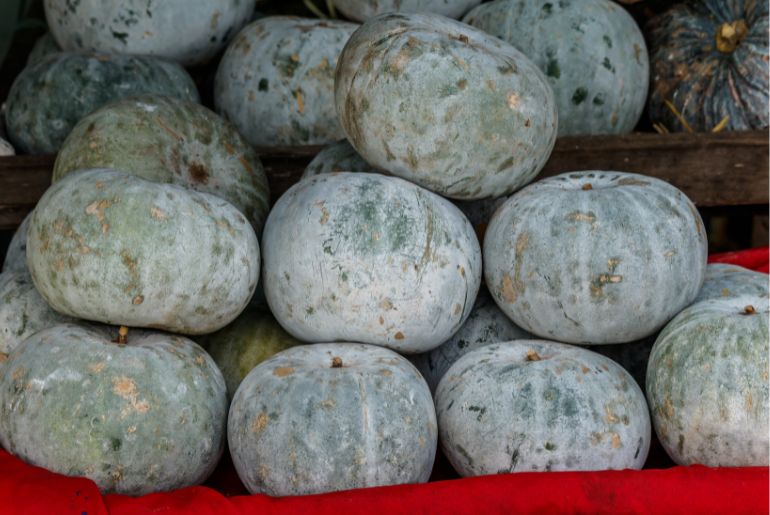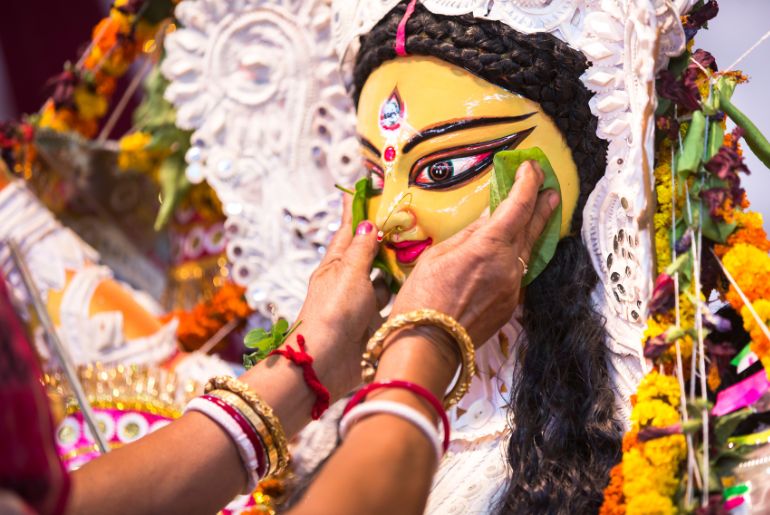Durga, the form of Shakti, is worshipped throughout the country. However, West Bengal holds a specific tradition of celebrating Durga Puja! In fact, during the festivities, the entire city of Kolkata lights up. Simple yet delicious bhog is served to Maa with ash gourd holding prominence. Do you know the story behind ash gourd and Durga Puja?
Durga Puja: The Significance Of Ash Gourd

During Durga Puja, simple food is being made in every household with most home-cooked bhog or naivedyam recipes telling highly personal stories. Though most of them have no connection to Vedas, others are based on literature that emphasises the bhog’s therapeutic or agricultural uses. A few recipes are lost throughout the course of events, and many of them relate to the sacrifice rituals.
This practice was once an essential part of the Maa’s worship, the Aghora and Tantric faiths. Ash or wax gourds are specifically specified as sacrifice offerings for the Devi. In order to strengthen its place in the bhog dish, the chalkumro, or ash gourd in Bengali, has been used as a substitute sacrifice.
Sacrifice was involved since the Goddess is an incarnation of Shakti. In fact, the puja was once used as an occasion for animal sacrifice. But throughout time, the faunal sacrifice was substituted by an ash gourd. This vegetable is also credited with having “Prana,” meaning “life”.
Also Read: From Sreebhumi To Ahiritolla Sarbojonin, Mamata Banerjee Inaugurates Durga Puja Pandals Virtually
Animal sacrifice rituals came under attack when several organisations developed in the past. Instead, the custom of making an ash gourd offering was accepted. In keeping with the symbolism, the sacrificial ash gourd is typically punctured with four sticks for the legs and a smaller stick for the tail. Vermilion is applied over the exposed, damp flesh, forming a trail that resembles a bloodstain.
Cooking With Mustard & Vedic History

During Durga Pujo, Bengalis customarily prepare the sacrificial ash gourd for bhog using mustard paste and mustard oil. It asserts that using mustard wards off evil and safeguards women.
The Vedic history of this vegetable is made clear by its Sanskrit name, Kusmanda. It can be used in place of the Devi Kusmanda. She is said to have created the universe. The Ishwara Samhita, a work of Pancharatra literature, mentions the use of kusmanda (ash gourd) in offerings and bhog. According to the scripture, an ash gourd is prepared with crushed cumin and peppercorns in heated ghee.
Also Read: Durga Puja 2023: 8 Most Unique-Themed Puja Pandals In West Bengal To Visit This Year
This is one of the earliest ash gourd bhog recipes that is known, highlighting its significance in the evolution of Vaishnava philosophy.
Cover Image Courtesy: Canva
For more such snackable content, interesting discoveries and latest updates on food, travel and experiences in your city, download the Curly Tales App. Download HERE.
Good news! We are on WhatsApp! Subscribe to Curly Tales WhatsApp Channel to stay up-to-date with exclusive content and BTS. Join HERE.
First Published: October 13, 2023 1:01 PM



